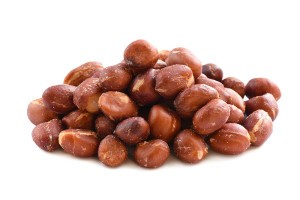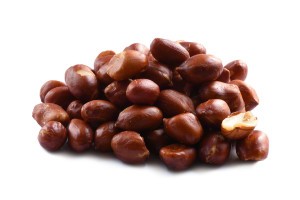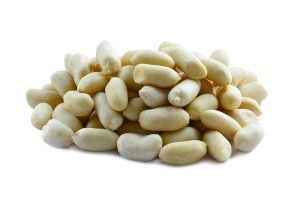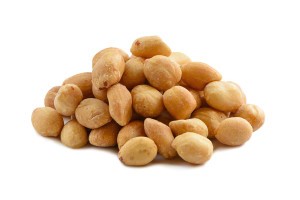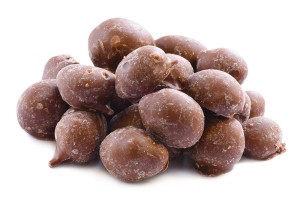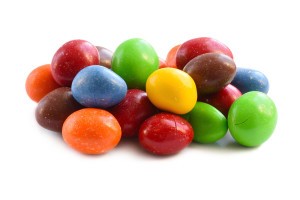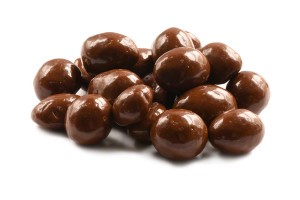Bulk Peanuts
Wholesale Peanuts — Redskin, Blanched, Roasted Unsalted & Salted, Chocolate Covered Peanuts — Bulk Peanuts at Nutstop.com
Harvesting Peanuts
Peanuts are similar in nutritional profile as nuts such as almonds and walnuts. They are used in similar culinary manners. However, botanically, peanuts are classified as a grain legume. One of their differentiating factors is that peanuts flower above ground, but their fruit grows underground. Peanuts are planted in soil that has a temperature of 65 degrees or above. The seedlings arrive about 10 days after planting. Yellow flowers appear approximately 40 days after planting. When the petals fall off of the plant, an ovary begins to form and various stages of the growth process occurs. Each plant will yield about 40 pods. Harvest time occurs approximately 140 to 160 days after planting.
Peanut growers must carefully assess the soil conditions before harvesting peanuts. The soil can’t be too wet or too dry. When the optimum conditions arrive, machines are brought in to dig the peanuts up from the ground. The machine loosens the peanuts from the ground and cuts the tap root. The next step occurs immediately after that when a mechanical shaker lifts the plant from the ground. The shaker helps remove dirt from the plant and also rotates the plant. It then places the plant back on the ground in what is referred to as a windrow. The plants are left in the windrow with the peanuts facing upward and the leaves downward for 2 to 3 days. This period of time is a necessary part of the drying process. Peanuts initially contain 25% to 50% moisture. Leaving them in the field for a couple of days starts the drying process. When those 2 or 3 days have passed, a machine called a combine is used to separate the peanuts from the vines. The peanuts go into a hopper that is located on top of the machine. The vines are deposited back onto the ground.
Quality control
U.S. government inspectors monitor peanut production from the farm to the processing plant and on to their ultimate selling location where they are sold as bulk peanuts or in smaller, individual packages. They are involved with each stage of growth and production. There is a Peanut Standards Board whose role is to assure that strict quality control standards are being observed. In 1988 the peanut industry formed The Peanut Foundation which plays a vital role in increasing peanut production and improving peanut quality.
Processing
The moisture content of peanuts must be reduced to 10% so that they can safely be stored. Peanut mills take peanuts from the farm to continue the curing process, if necessary and to clean, store and process the peanuts. High air flow dryers are one method of drying peanuts. Special peanut wagons are also used to dry peanuts. The processing methods vary according to the intended use of the peanuts. Peanuts that are processed for in-shell roasting go through a process that involves separating the nuts from the vine, stem, leaves and debris. This is done using screens and blowers. The peanuts are then washed to remove stains and discoloration. Following that, they are dried and powdered with talc to whiten the shells. The process is similar for shelled peanuts. Following the removal of debris, size grading screens are used to sort the peanuts according to size. The sizing process must occur prior to shelling so that the pods can be crushed without crushing the kernels. Once the cleaning process is complete, the peanuts go through a quality control grading process that sorts them according to size and quality. Kernels are graded into sizes based on the counts per ounce. Kernels which count 60 to 80 per ounce, such as Spanish peanuts, are considered small. Peanuts with a count of 40 to 60 are sorted as medium and those with a count of 30 to 40 are graded as large. The graded peanuts are then stored until they are sold as bulk peanuts in a raw state to consumers worldwide.

